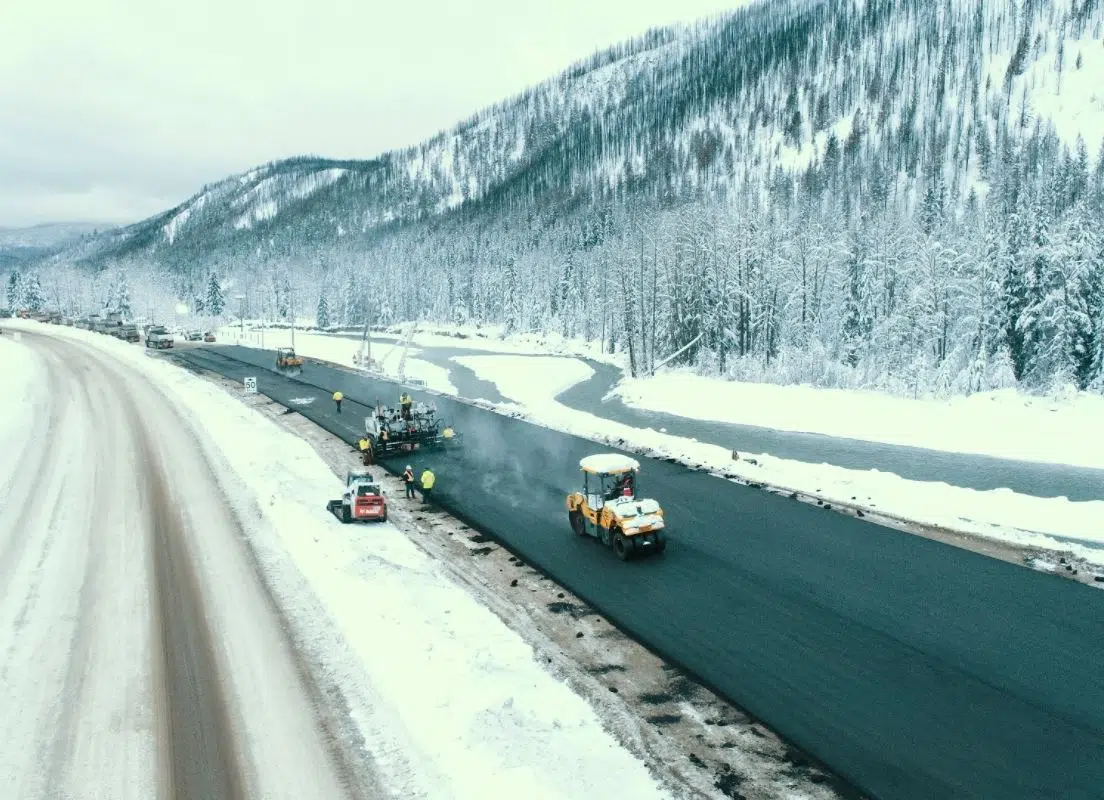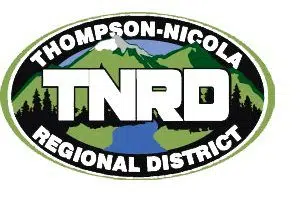
Crews paving a section of the Coquihalla on Sunday, Dec. 19, ahead of the opening on Monday, Dec. 20. (Photo via TranBC)
B.C.’s Transportation Minister says he is confident in the repairs done on the Coquihalla which has opened to essential traffic today.
Rob Fleming says crews have worked around the clock to make sure that the highway can handle a large volume of commercial traffic. Only vehicles with a minimum licensed gross vehicle weight (GVW) of 11,794 kilograms will be allowed on that highway for now.
“The amount of armouring and reinforcement and the engineered solutions, I mean, these are temporary fixes but they are very strong and very fortified,” he said. “We had no supply interruptions around the kind of material that we needed for this rebuild.”
“I didn’t think it would be realistic before Christmas but because we enhanced the schedule and made it to be around the clock, those workers are going to get some well deserved days off after we get it reopened.”
There were 20 major washouts along the 130 km stretch of the Coquihalla between Hope and Merritt as a result of floods and mudslides just over a month ago, on Nov. 14. That includes seven bridges where the spans either collapsed completely or were otherwise heavily damaged.
More than 300 workers were involved in the rebuild, with the province saying they moved over 400,000 cubic metres of gravel, rock, and other material to repair and reopen the highway in just 35 days.
“Ministry teams, maintenance contractors and hundreds of workers going flat out in challenging conditions have allowed us to reopen the Coquihalla Highway today, giving B.C.’s commercial drivers a safe, efficient route between the coast and Interior,” Fleming said.
Last week, Fleming called the repair work that has been done on the highway “one of the most remarkable engineering feats in recent memory” in the province.
“Quite frankly, the dynamic was one that we can all be proud of. It was contractors moving equipment from other sites, wanting to work on this project and to get it done,” he added.
“They’ve worked to make it safe and strong and it will be engineered to be a good temporary fix on all the damaged areas.”
In a statement, Kelly Scott, the president of the BC Road Builders and Heavy Construction Association said the reopening of the Coquihalla is a testament to the “strong working relationship” between his organization and the Ministry of Transportation and Infrastructure.
“This relationship allowed the road builder industry and government to come together almost immediately, unified in the goal of reopening this vital link,” he said. “We are grateful for all the women and men who worked safely and tirelessly around the clock to achieve our goal.”
Added Dave Earle, the president and CEO of the BC Trucking Association, “having use of the Coquihalla Highway brings more predictability to the movement of goods through British Columbia,” he said.
“This an important step toward restoring our supply chain, and our members appreciate the extraordinary efforts of everyone involved.”
As announced last week, there will be changes to the travel pattern on the Coquihalla and reduced speed limits. Amenities will also be limited for the time-being along the highway.
The Province also says plans for permanent repairs to the Coquihalla are also underway.
Travel Restrictions Lifting on Highways 3, 99
As announced by Fleming last week, with commercial vehicles moving to the Coquihalla, travel restrictions on Highways 3 and 99 will be lifted so people can travel for non-essential reasons.
Restrictions have been lifted from Highway 99 between Pemberton and Lillooet, though the highway remains for smaller vehicles under 14,500 kilograms GVW. As for Highway 3 between Hope and Princeton, travel restrictions will be lifted at 8 a.m. Tuesday, Dec. 21.
Fleming also confirmed that there will be road blocks in Hope and Merritt to ensure that only essential traffic passes through on the Coquihalla.
Drivers who are travelling on highways 3 and 99 are being told to expect delays and congestion, while also being told to avoid highway travel unless necessary.
“Highway 3 and Highway 99 are mountainous highways where weather conditions can change quickly, and people should be comfortable driving in winter conditions,” the Province said, in a statement. “[Our] maintenance contractors are out in full force, but it is important that drivers do their part and drive to conditions, and check DriveBC before setting out.”
Winter tire and chain-up regulations are in effect on both highways, while people are also being told to ensure that they have a full tank of gas, food and water, and warm clothes before setting out on a trip.















